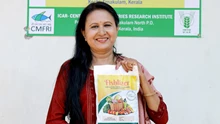
Making holistic and healthy choices can often be daunting, especially when the food labels have such intricacies. So, let us make this process easy by understanding the crucial aspects of food labels.
Important Checks
-
Look for the FSSAI logo along with the license number to ensure compliance with safety standards.
-
Pay special attention to common allergy-causing ingredients such as casein, tree nuts, eggs, fish, shellfish, soybean, and wheat proteins. For individuals with sensitivities to these allergens, even trace amounts can trigger severe allergic reactions.
-
Avoid products containing these ingredients if you are prone to allergies. Additionally, check for artificial or permitted flavorings and colors among the food additives.
-
Always go for class I preservatives over class II, prioritizing natural and safer options to maintain food freshness and safety.
Calorie Count
The calorie content listed on food labels provides a snapshot of the energy we derive from consuming a particular product. However, it is essential to dig deeper and consider serving sizes. Often a small proportion of a snack may be packed with a calorie punch.
Fats & Cholesterol
Fats, both saturated and trans, along with cholesterol, play a pivotal role in our health. Monitoring their levels can help mitigate the risk of heart disease and maintain cholesterol levels. By selecting foods low in these components, we take an important step towards protecting our cardiovascular wellness.
Sodium Content
Excessive sodium intake is linked to hypertension, a significant risk factor for heart disease and stroke. By carefully reading through the food labels and choosing products with the lowest sodium content, one can protect themselves from the adverse effects of high blood pressure and promote overall cardiovascular health.
Daily Allowance (GDA) or Daily Value % (DV%)
The GDA or DV% serves as a compass, guiding us towards balanced nutrition. By understanding these values, we can assess the nutritional adequacy of a product and make informed choices aligned with our dietary goals. Whether it is meeting our daily fiber requirements or avoiding excessive sugar consumption, the GDA empowers us to prioritize our health.
Nutritional Transparency
Opting for foods with minimal, recognizable ingredients ensures we nourish our bodies with wholesome nutrients while staying clear of artificial additives and preservatives.
The Organic Route
Choosing locally sourced, organic, and sustainably produced foods not only benefits our health but also contributes to environmental sustainability. Hence, one could support organic farming practices as well as reduce carbon footprint.










